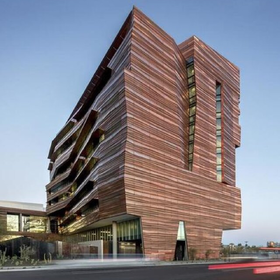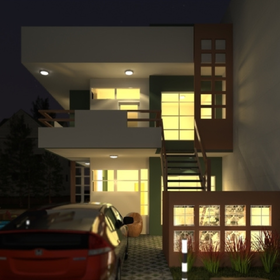













Building information modeling (or BIM) entails an entire system of different pieces of software and technology used in the creation and management of computer-based assets. These represent both physical parameters and functional attributes for the entirety of diverse architectural projects. Because of this, BIM does not merely describe one such tool or application but pertains to several different services or systems that all communicate easily with one another. Together, this suite forms the basis of building information modeling for architectural and related fields.
Frequently, BIM models relate to computer files that have the benefit of being serviceable by a wide range of systems and entities. Architectural design services, clients, and other construction-related professionals often employ these files to determine how a building should be constructed, from concept through to completion. By way of necessity, there is a good deal of communication between these different people and organizations. Building information modeling is essentially the foundation that allows for this sort of seamless intercommunication and exchange of information and system files.
For many, BIM presents a novel concept. This may be because, fundamentally, building information modeling entails an entire system of architectural information, imaging, and other essential data for any given project, as opposed to any particular series of, say, working drawings or blueprints. In addition to architects, there are countless mechanical engineer designers and construction firm operators that also make use of this database of information. Further, it often provides useful means of communicating with customers as well regarding a project’s planning, progress, and ultimate completion.
Due to this widespread exchange of information, BIM also makes use of a set of accepted guidelines and standard practices. In the same way that architects and interior designers must draft floor plans with certain parameters, building information modelers create schematics and information systems that rely on universally accepted practices within the industry. This way, individuals and teams from different firms or even different countries can communicate without difficulty.
Building on that same principle, it’s easy to see the connection between computer-aided drafting (CAD) models and the world of building information models. CAD drafts, drawings, blueprints, and renders represent the world in two or three spatial dimensions. For example, the height and width of a wall, the placement of sewer pipes, or the electrical wiring configuration in a building. BIM takes this not one, but two steps further by incorporating a pair of additional “dimensions:” duration and expense.
The time and money that a construction project requires are every bit as important as the specific details about size, placement, and configuration of the building itself. BIM allows different people and organizations to manage all this data in an organized, systematic, visual, and ultimately shareable way. Of course, all parties involved need access to the components of the project that relate to their responsibilities. The more each branch knows of the entire project, the more likely it is to be a success in areas such as budget and schedule constraints as well.
Another essential feature of building information modeling comes in the way of automation. Instead of performing every task manually, BIM allows for data to be processed and managed systematically and efficiently for a project’s entire duration. BIM can automate tasks regarding CAD design and programming, documentation and analysis, maintenance and manufacturing, from conceptualizing to demolition and even renovation. If it pertains to a construction project’s organization and progression, it’s possible to manage, communicate, and often automate within the framework of building information modeling.
Architectural and design work encompasses a wide range of disciplines and operational pieces. Each one of these needs to communicate with the others about any number of the various components regarding a construction site and the overall project, as well as the delineated responsibilities of each party. As mentioned above, this interaction is precisely what building information modeling is all about.
That said, there exists a couple of key distinctions between the programs that make 2D CAD drafting and schematics possible and that of BIM systems. Autodesk is arguably the most well-known of all computer-aided design providers, including their program Revit, but there are others as well, such as ArchiCAD and Nemetschek’s AllPlan. The difference is that these three software applications function as a single component of the overall production line that BIM’s compatibility makes possible. In some ways, they are two sides of the same coin.
Because of this, the details included can relate to a vast array of different features and facets. Some examples include the actual materials used during construction, geometric parameters, cost and resource allocation, and even contact information. This list is not exhaustive, of course, as BIM may include virtually any relevant components, ranging in projects from the residential to the commercial and industrial, as well as everything in between.
Apart from the workers in the field, supply chains also perform a significant role in renovation and development projects. Contractors rely on suppliers for the actual materials they use on the construction site. As such, they need to know when certain materials will be available, the cost of these elements, fabrication parameters, and how long it will take to transport everything, along with a range of other critical information.
When taken together, then, one can understand building information modeling as the central piece that connects all the other parts into a single, flexible unit. Architects, engineers, contractors, and suppliers can all communicate with one another during the length of a project via the BIM system.
Functionally, there are many ways that BIM operates. The internet makes it possible to integrate enormous libraries of architectural content into design platforms. These can be incorporated directly into a project and ultimately distributed to any relevant parties. As a matter of efficiency, BIM creates numerous opportunities for identification and designation that can be loaded immediately via systems automation and dispersed appropriately.
Three-dimensional models can allow design problems or difficulties to become apparent before construction begins. In the same way, building information modeling assimilates all the applicable material (including 2D drawings and 3D models) into one database for the benefit of proactive problem-solving and comprehensive project awareness. In other words, if one component or parameter of the data set is altered, the other systems can recognize this, adjust accordingly, and update the rest of the database automatically.
Without BIM, the coordination of the many disparate parts and functions of a construction project would require endless manual adjustment. With building information modeling, these tasks have the convenience of being handled automatically and seamlessly, frequently saving time and money in the process.
Many of BIM’s numerous advantages have been cited above. However, for architects more specifically, there exist several conceptual components for which building information modeling provides exceedingly beneficial assistance.
Architects must communicate and interact regularly with their clients. These range from residential homeowners to businesses, manufacturing plants, and even major government contracts. They need to design and implement the development of the entire project, and this entails dealing with far more than the beautiful facade of a new building.
In other words, architects need to have a means of exchanging information with everyone from customers to local bodies and municipalities to the gas, electric, water, and other utilities involved in the site’s area, and many more besides. This may also include transportation authorities in dealing with major roadways, railway lines, ports, bridges, and tunnels.
As their time is limited and valuable, architects must have the means of transmitting such information to and from these different entities efficiently and effectively. Construction projects are in essence the management of a complicated network of diverse parts, and at the center of this, one will always find an architect. This management and oversight is exactly why BIM exists and what makes it such an excellent and formidable ally in the face of major development work.
Building information modeling provides a more straightforward and effective means for teams to cooperate and join forces throughout a project. Because of this, BIM naturally saves time as well due to its increased transparency from one branch of the project to another. While details of a site may exist in separate places, building information modeling brings them all together. This amplifies accountability through integration and exhaustive records of alterations throughout the process.
Bringing Cad Crowd on board with your architectural BIM design services project means that you can work with an exclusive group of the world’s greatest freelancers in nearly every engineering or design field in existence. We have a community of technical draftsmen and women, designers, and modelers all over the globe with years of experience working across a wide range of software within a diverse spectrum of businesses.
Whatever your needs may be, Cad Crowd can help you get exactly where you need to go. We can meet every architectural BIM design services solution, regardless of project field or scope.
Notably, we can help you by utilizing a range of the most updated programs. Our network is made up of the best experts using the highest quality current computer-aided design software. Just let us know if there is a particular application you need us to use, and we will locate the perfect architectural BIM services designer or engineer for your project.
Cad Crowd’s services are at the disposal of clients who currently have drafts or models in-hand and need additional assistance with the task of rendering or further development utilizing a broad range of expert architectural BIM design services engineers and designers.
Cad Crowd is simply the best place to get everything your infrastructure project needs researched, designed, drafted, engineered, or rendered. Start working with us today and find out how it works.
At Cad Crowd, we have the privilege of working with some of the best freelancer CAD designers and 3D modelers in the world. Regardless of the type of project you have, let us help. Contact us today to get some help.


